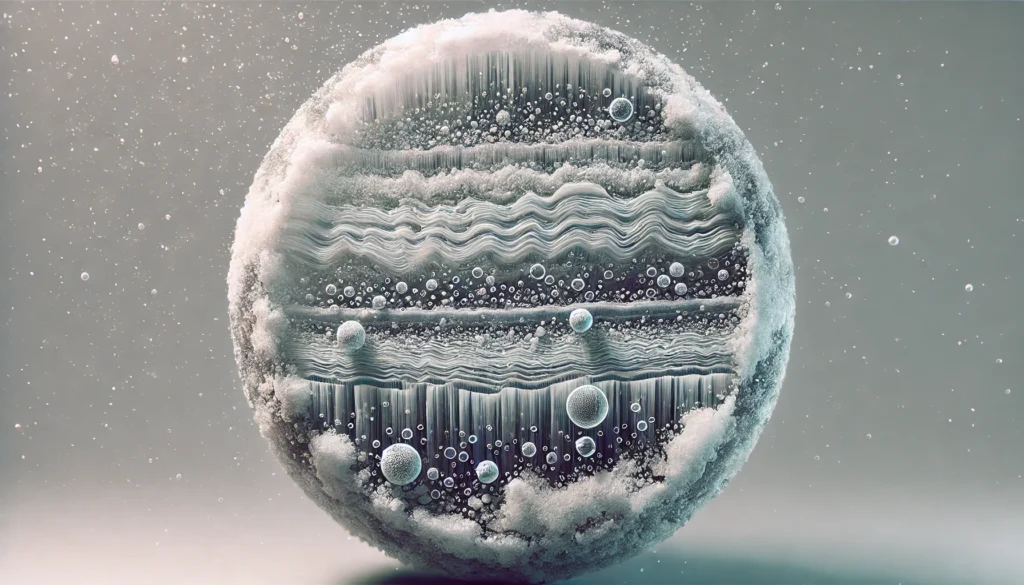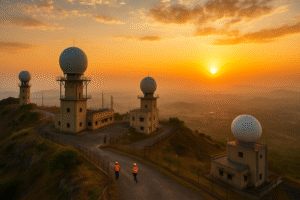When we think of unlocking the secrets of Earth’s climate history, images of high-tech satellites or intricate computer models might spring to mind. However, some of the most valuable clues about our planet’s past climate are found in the frozen layers of ancient ice buried deep beneath the surface. These are ice cores—long cylinders of ice extracted from glaciers, ice sheets, and polar regions, which serve as time capsules for climate science. But what makes ice cores so important in understanding climate change? Let’s take a journey into the heart of these frozen treasures.
Introduction: What Are Ice Cores?
Imagine slicing into a massive, multilayered cake, where each layer tells a story about the time it was made. That’s exactly what scientists do when they extract ice cores from the Earth’s icy regions. Each layer of ice, formed year after year, contains tiny bubbles of ancient air, dust particles, and even trapped pollutants. These layers reveal a detailed and continuous record of past climates, stretching back hundreds of thousands of years. In this blog, we’ll explore how ice cores play a crucial role in climate science by helping scientists piece together the Earth’s climate history.
The Frozen Time Capsules: How Ice Cores Are Formed
Ice cores form as snow accumulates year after year, compressing and turning into ice over time. In places like Greenland and Antarctica, where ice sheets are thousands of meters thick, the layers of ice date back over 800,000 years! Each year, a new layer of ice is added to the surface, trapping tiny air bubbles and particles that reflect the composition of the atmosphere at the time. Think of these bubbles as tiny time travellers, preserving the air that was once breathed by ancient creatures and even early humans.
These frozen records allow scientists to reconstruct past climate conditions in extraordinary detail. It’s like reading the pages of Earth’s climate history, one icy layer at a time.

Unlocking Climate Clues: What Do Ice Cores Reveal?
Greenhouse Gases Over Time
One of the most significant findings from ice core research is the link between greenhouse gases (like carbon dioxide and methane) and global temperatures. By analyzing the air trapped in ice bubbles, scientists can measure the concentration of these gases at various points in Earth’s history. These measurements show a clear pattern: when greenhouse gas levels were high, the Earth was warmer, and when they were low, it was cooler.
A landmark case of ice core analysis comes from the Vostok ice core in Antarctica. This core, which spans over 400,000 years, reveals that modern CO₂ levels are higher than at any point in the last four climate cycles. This is a sobering reminder of the unprecedented levels of greenhouse gases we are pumping into the atmosphere today.
Ancient Temperatures
Ice cores also help scientists estimate past temperatures. By studying the isotopic composition of the ice (the different forms of oxygen and hydrogen atoms), researchers can infer how warm or cold the Earth was when the ice formed. This is how we know about the Ice Ages and how temperatures have fluctuated over millennia.
Volcanic Eruptions and Other Events
Have you ever wondered how we know about massive volcanic eruptions that occurred long before humans began keeping written records? Ice cores can help here, too! Volcanic ash and sulfate particles get trapped in the ice, providing evidence of ancient volcanic activity. For example, ice cores contain layers of ash from the eruption of Mount Tambora in 1815, which led to the “Year Without a Summer.”
A Record of Human Impact
Beyond natural climate cycles, ice cores also reveal the environmental impacts of human activity. Tiny lead particles found in Greenland ice cores, for instance, trace the rise and fall of Roman mining operations over 2,000 years ago. Similarly, the rise of industrial pollution is marked by a sharp increase in sulfate and nitrate levels in ice layers from the 19th century onward.
How Ice Cores Help Predict Future Climate
By understanding how Earth’s climate has responded to changes in greenhouse gases in the past, scientists can better predict how the climate might change in the future. For example, the data from ice cores shows that even slight increases in carbon dioxide have triggered significant warming periods. This has huge implications for today’s rapidly rising CO₂ levels. If small natural variations in CO₂ caused significant climate shifts, what does that mean for the much larger man-made increases we see today?
Case Study: The Vostok Ice Core
One of the most famous ice cores comes from Vostok Station in Antarctica. This ice core, drilled over 3,600 meters deep, provides a continuous record of the last 420,000 years of Earth’s climate. The Vostok core is crucial because it highlights the direct link between atmospheric carbon dioxide levels and temperature. Periods of high CO₂ coincide with warm interglacial periods, while low CO₂ levels align with the cold Ice Ages. This core offers one of the clearest records of Earth’s climate cycles and underscores the role of greenhouse gases in controlling global temperatures.
Challenges and Innovations in Ice Core Research
Extracting and analyzing ice cores is no easy task. Drilling through thousands of meters of ice in some of the most inhospitable places on Earth requires advanced technology and years of preparation. The cores must be carefully transported, often thousands of kilometres, to labs where scientists work to keep them frozen and intact.
Innovations in ice core analysis are continually improving our understanding of climate. New techniques allow scientists to study smaller and smaller samples, providing more detailed information about the past. Additionally, ice core drilling projects are expanding to less studied regions, like the Himalayas and the Andes, providing a more complete global climate record.
Conclusion: Why Ice Cores Matter
Ice cores have proven to be an invaluable tool in the study of climate science, offering a window into the past that helps us better understand the future. They uncover patterns of natural climate fluctuations, the influence of greenhouse gases, and the effects of human activities on the environment. The next time you hear about climate change predictions, remember that some of the most critical evidence comes from these frozen archives deep beneath our feet.
As we continue to face the realities of climate change, the lessons preserved in ice cores are more relevant than ever. They remind us that Earth’s climate is incredibly sensitive to changes in greenhouse gas levels—a sobering fact in today’s warming world.
Author’s Note:
As we explore the role of ice cores in understanding climate change, it’s fascinating to think that the key to Earth’s future might be hidden in its frozen past. The more we learn from ice cores, the more equipped we are to make informed decisions for a sustainable future.
G.C., Ecosociosphere contributor.
References and Further Reading:
- NASA Climate Change: Ice Core Data
- National Snow and Ice Data Center: Ice Cores
- What is: Annual Growth Rings – Suntek Lawn Care. https://www.sunteklawncare.com/glossario/what-is-annual-growth-rings/
- Types of Greenhouse Effects and What You Can Do About Them?. https://newsarchy.com/types-of-greenhouse-effects-and-what-you-can-do-about-them/
- Winter 2023 Class Schedule: Department of Earth and Planetary Sciences – Northwestern University. https://www.earth.northwestern.edu/courses/2022-2023/class-schedules/winter-2023-class-schedule.html





Comments
Your blog is a breath of fresh air in the often mundane world of online content. Your unique perspective and engaging writing style never fail to leave a lasting impression. Thank you for sharing your insights with us.
I was suggested this web site by my cousin Im not sure whether this post is written by him as no one else know such detailed about my trouble You are incredible Thanks
Noodlemagazine Exceptionally shared. Every quote was meaningful, and thank you for this content. Keep up the motivation and keep sharing.